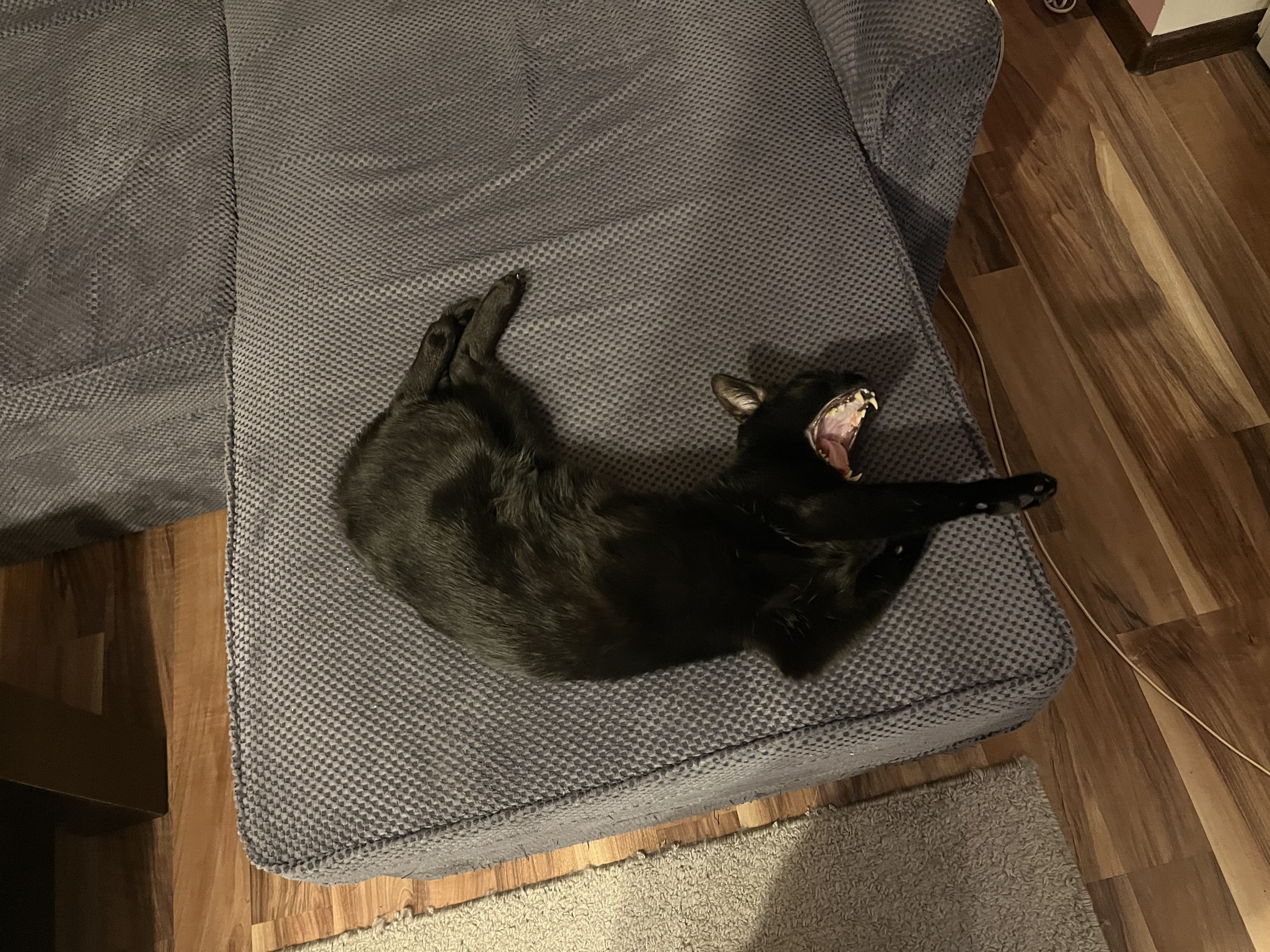Yeah, Flatpak installing user-space driver for itself is unfortunately not solvable until there’s open source driver that is part of the Mesa project. Every time you update the driver in your system, Flatpak must update its nvidia-utils too, because their versions must match exactly. For Mesa drivers, Flatpak also installs the drivers as Flatpak, but they’re compatible back and forth and it only updates when it ships new version.
The cleanup should be more automatic, but try
flatpak uninstall --unused
Because it always worked on X11 and Mint Cinnamon is just that. I used NVIDIA graphics on X11 in 2007 and, apart from the extra dkms driver that could break at times, it was fine, and much better anyway than ATI/AMD with proprietary fglrx driver. Rest in piss son of a bitch.
The question was what would I recommend for Wayland. Only the brand new 555 driver combined with most recent compositors (and other packages like mesa, xwayland,…) offers decent NVIDIA experience. It’s a matter of new distro releases around this fall.
Neither Cinnamon, XFCE or Mate have stable Wayland support. You need GNOME or Plasma for that if you want a desktop (or wait for the new Cosmic desktop and new PopOS)
Well, if your GPU is NVIDIA, you will also need a bleeding edge rolling release distro for now. Other than that, anything that ships recent version of KDE Plasma or GNOME (the first one handles Xwayland with DPI scaling a bit better imo and is generally more functional)
Garuda (Arch-based distro) is worth looking at, but has a ton of UI customization that I personally don’t like and, same as with Manjaro, I’d spend some time on cleaning it up to more vanilla state.
Endeavour is cool option as well, but other than GUI installer, it provides you with Arch base and is purely terminal-centric.
OpenSuse Tumbleweed - personally never liked RPM based distros, and Zypper (the package manager) is pretty slow, but the distro itself is beloved for being great balance between bleeding edge and stability and set of GUI tools for system management.
Fedora (defaults to GNOME but has decent KDE spin) is great option for a workstation, but it has couple of advanced configurations that not everyone needs (like SELinux getting in your way sometimes) and because it’s very concerned about licensing, you might need to manually add extra video encoding/decoding drivers and media codecs with royalties.
Nobara is modification of Fedora that comes pre-packed with gaming related stuff. It’s pretty cool, but in my experience it tends to ship experimental packages with regressions.
Last but not least, if you’re patient enough to read through some documentation and follow guides step by step, can invest some time and want to learn, go with Arch Linux. The ISO ships now with text-based archinstall installer that guides you through basic install and brings fairly functional Linux system out-of-box EASY, but still pretty bare bones without any assumptions on what you’re going to use it for and how. Everything that you need (like gaming, bluetooth, printing, file sharing…) has its Wiki pages with thorough explanation in form of step-by-step guide. It’s all about installing packages and changing config files, it’s not doing anything automatically for you.
Yes, Flatpak fixed a lot of the old shenanigans we used to have when everything was either native package, or a binary to hope for the best and install libraries manually, or source code to collect everything that’s needed for building and again, hope for the best. It is however designed to provide a way to install graphical apps, but can’t handle everything native package does (like out-of-tree kernel modules, CLI utils, system services)
Mint is great and is absolutely enough for most people using computers, still as of now. It comes with its limitations though:
- By default it runs pretty old kernel. This is fine if your hardware is at least 3 years old. It allows to easily switch to newer kernel with just few clicks, but I expect newbies to not be aware of this at all. Oh, and I don’t know if it offers some custom kernels like tkg etc, which some might want to squeeze best gaming perf etc.
- Cinnamon is still limited to X11. If you have multi-screen setup, VRR, mixed refresh, mixed DPI etc, it’s better to switch to Wayland. Plus, Xorg server gets less and less maintenance and development. All the innovation moved to Wayland, so the experience on X will remain pretty stale.
- The Ubuntu base makes it so that for 3rd party software you either need deb packages or PPAs. Some will argue (me included) that it’s not the best solution
All of the above can easily be irrelevant to you and Mint is just perfect for what you need. It’s important to point out limitations of that choice, but crapping on it because you don’t like it is just pointless fuss
 I see where they were going with this
I see where they were going with this
AFAIK, the xz vulnerability was designed for Debian based on its workaround fixing systemd service status detection. Even if it shipped to something like Arch, the malicious code wouldn’t load.
It’s only bad when used incorrectly. Just store time in UTC and convert it to timezone of your setting to present it. Most modern languages offer a library that makes it just one more line of code. Not only it’s then clear and unambiguous, it supports all timezones.
Because people suggest distros based on their preference, not what is best suited in a given situation.
On one hand Mint is limited to X11 for now and surprise surprise “dealing with multiple monitors is horrible on Linux”. On other hand they’re on NVIDIA. This is close to not be the case, but X11 was a hard requirement for decades

Any experience you can share on how complete and stable is that experimental session? I probably wouldn’t throw newbie on that